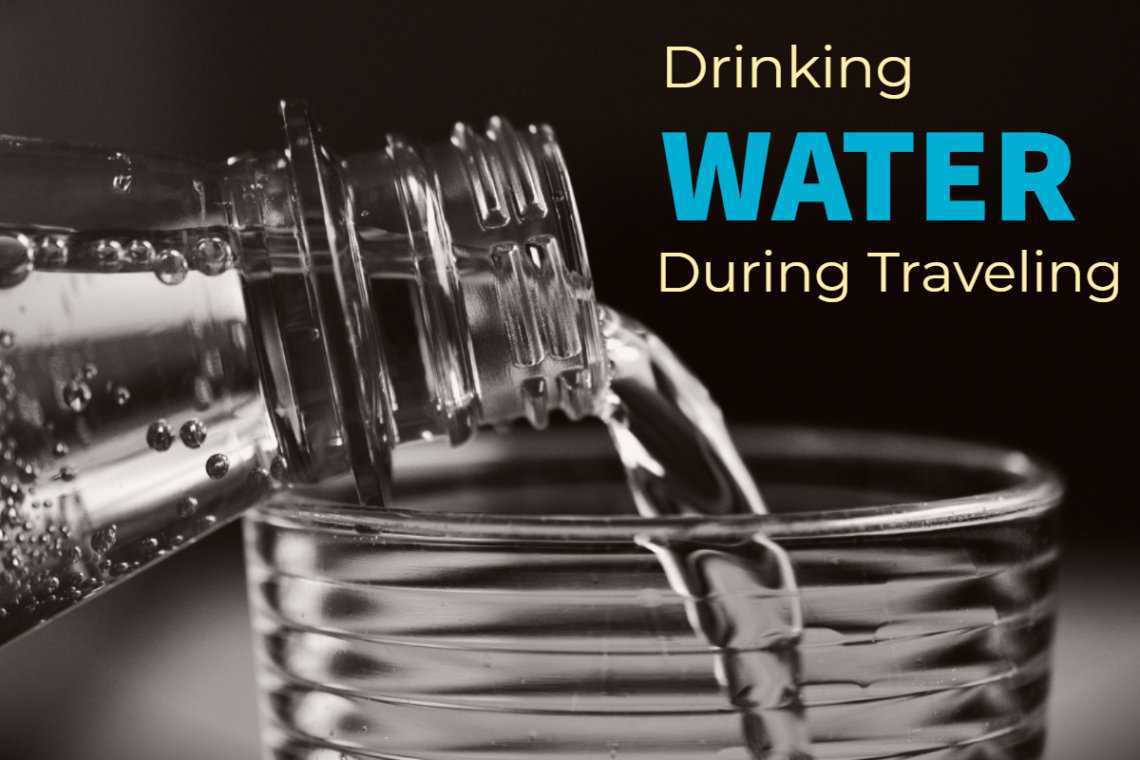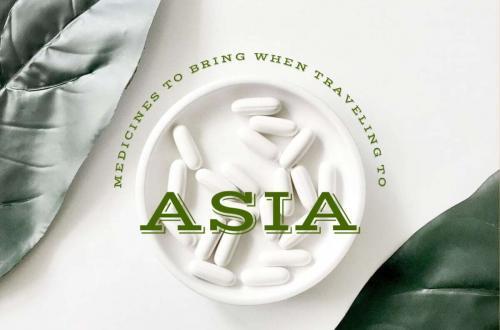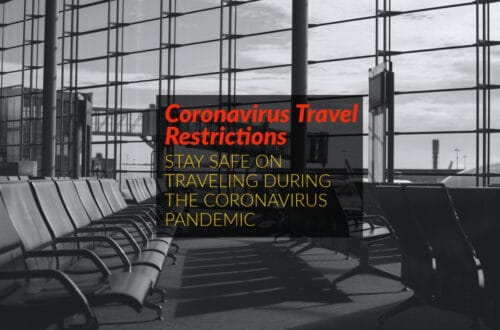
DRINKING WATER DURING TRAVELING IS CHALLENGING
Drinking water during traveling is always challenging and not taken seriously. Water is very important for any person, whether it is in the working or traveling conditions. Water requirements increase markedly during summer and extreme hot weather. Access to water while traveling in certain countries can be challenging, due to health and environmental issues. The challenge is always more difficult when visiting developing countries. Here is a reliable guide for drinking water during traveling, and how to find the best water to drink when traveling. And a list of the countries where it is either safe or dangerous to drink tap water.
Natural Mineral Water
Mineral water must be gotten exclusively from underground sources shielded from contamination dangers. In certain countries, these sources must experience 2 years of incessant testing for organisms so as to be guaranteed. likewise, Mineral water should be packaged near its source.
The principle difference from the regular tap water is that the mineral water contains some minerals and mineral salts. Minerals such as Calcium, Magnesium, Potassium, Sodium, Bicarbonate, Iron and Zinc. However, the difference between mineral water and the regular tap water can be insignificant and depend on the source of the tap water. surprisingly, In some areas in the world, regular tap water can be even safer than mineral water.
| Q: IS IT ALLOWED TO BRING A BOTTLE OF WATER ON THE AIRPLANE? A: Bottled water maybe not allowed. Yet you can bring an empty bottle through the checkpoint and after that fill it up with water or juice. |
| Q: WHERE IS THE WORLD’S PUREST FRESHWATER? A: The freshwater found in Puerto Williams town in southern Chile’s Magallanes district is the purest freshwater on our planet, the University of Magallanes said. |
Springwater
Spring water is the water which is gathered legitimately from an underground spring that ascents to the surface. Obviously, Since it’s taken straight from its source, spring water has not gone through water treatment and distribution.
Prepared Water (Tap Water)
What we’ll call “Prepared water” alludes to water drawn from city water supplies. Prepared water is normally drawn from huge reservoirs, lakes or rivers. After that, prepared water is treated so as to guarantee that it follows the chemical, microbial, and safety standards.
Dangers of mineral water
Drinking water during traveling is almost always depending mainly on mineral water. But, the major safety issue about mineral water is not related to the water itself. The dangers of the mineral water are related to plastic containers and packaging and restoration system. The issue with plastic is that it drains poisons into the water it is holding, a reality that has been connected to various kinds of disease and cancers. So, mineral water introduced and stored in glass bottles are safer and healthier.
Mineral water is generally safely drinkable. Side effects related to Carbonated mineral water contains carbonic acid are rare, it can cause hiccups or bloating.
How about water in Egypt?
Egypt depends so intensely on so few sources for its water. The United Nations cautions that Egypt could come up short on water completely by 2025. Furthermore, the few water supplies Egypt are seriously abused. Citizens and organizations always dump rubbish into the Nile River, one of Egypt‘s greatest water sources.
However, the majority of the locals depend entirely on the regular tap water which is not safe at all and even worse, could be harmful. The worse is yet to come, in some rural areas Egyptians has no tap water available at home and they depend on public water supply.
Drinking water during traveling to Egypt is also depending on the mineral water which is widely available and easy to get. It is NOT encouraged to drink tap water. Tap water is generally safe for washing, and for hot drinks assumed that it was boiled efficiently.
Drinking water during traveling to Egypt is also depending on the mineral water which are widely available and easy to get. It is NOT encouraged to drink tap water. Tap water is generally safe for washing, and for hot drinks assumed that it was boiled efficiently.
The brand does matter
The best solution for drinking water during traveling is mineral water. But, it is obvious that not all mineral water brands are the same. There are some differences in color, taste, the content of minerals and it differs from one country to another. Packaging and storage systems, as well as quality control as censorship, are factors that cannot be ignored.
Best bottled mineral water brands are: (the source)
- Mountain Valley Spring Water
- Voss
- Fiji Natural Artesian Water
- Nestlé Pure Life
- Evian Water
- Dasani
- Aquafina
- Smartwater
| COUNTRIES WITH THE BEST DRINKING WATER (the source) 1. DENMARK 2. ICELAND 3. GREENLAND 4. FINLAND 5. COLOMBIA 6. SINGAPORE 7. NEW ZEALAND 8. CANADA |
COUNTRIES WITH THE WORST DRINKING WATER (the source)
|
Drinking water during traveling
The Centers for Disease Control and Prevention (CDC) published an infographic map that listed the safe and dangerous countries to drink tap water. in my opinion, CDC guide for the safe water to drink during traveling is NOT totally reliable, for 2 reasons. The first reason is, as it mentioned some countries such as Saudi Arabia where it is safe to drink tap water. it is well known that tap water in Saudi Arabia is not safe at all. So, it is wise to ask the locals. The second reason is that not all areas in the same country are the same even if in the US.

List of countries where the tap water is safe to drink
According to the CDC the countries where it is SAFE to drink tape water are:
A: Andorra, Aruba, Australia, Austria,
B: Bahrain, Belgium, Bermuda,
C: Canada, Chile, Cook Islands, Costa Rica, Croatia, Curacao, Czech Republic,
D: Denmark,
E: Estonia,
F: Finland, France,
G: Germany, Greece, Greenland, Guadeloupe,
H: Hungary,
I: Iceland, Israel, Italy,
J: Japan,
K: Kuwait,
L: Liechtenstein, Luxembourg,
M: Malta, Martinique, Monaco,
N: Netherlands, New Caledonia, New Zealand, Norway,
P: Palau, Poland, Portugal, Puerto Rico,
R: Republic of Ireland, Reunion,
S: Saint Helena, San Marino, Saudi Arabia, Singapore, Slovakia, Slovenia, South Korea, Spain, Sweden, Switzerland,
U: U.S. Virgin Islands, United Arab Emirates, United Kingdom, United States.
List of countries where the tap water is not safe to drink
According to the CDC the countries Where it is DANGEROUS to drink tape water are:
A: Afghanistan, Albania, Algeria, American Samoa, Angola, Anguilla, Antigua and Barbuda, Argentina, Armenia, Azerbaijan, Azores,
B: Bahamas, Bangladesh, Barbados, Belarus, Belize, Benin, Bhutan, Bolivia, Bonaire, Bosnia and Herzegovina, Botswana, Brazil, British Indian Ocean Territory, British Virgin Islands, Brunel, Bulgaria, Burkina Faso, Burundi,
C: Cambodia, Cameroon, Canary Islands, Cape Verde, Cayman Islands, Central African Republic, Chad, China, Christmas Island, Cocos (Keeling) Islands, Colombia, Comoros, Cuba, Cyprus, Democratic Republic of the Congo,
D: Djibouti, Dominica, Dominican Republic,
E: East Timor, Easter Island, Ecuador, Egypt, El Salvador, Equatorial Guinea, Eritrea, Eswatini, Ethiopia,
F: Falkland Islands, Faroe Islands, Federated States of Micronesia, Fiji, French Guiana, French Polynesia,
G: Gabon, Georgia, Ghana, Gibraltar, Grenada, Guam, Guatemala, Guinea, Guinea-Bissau, Guyana,
H: Haiti, Honduras, Hong Kong,
I: India, Indonesia, Iran, Iraq, Ivory Coast,
J: Jamaica, Jordan,
K: Kazakhstan, Kenya, Kiribati, Kosovo, Kyrgyzstan,
L: Laos, Latvia, Lebanon, Lesotho, Liberia, Libya, Lithuania,
M: Macau, Madagascar, Madeira, Malawi, Malaysia, Maldives, Mali, Marshall Islands, Mauritania, Mauritius, Mayotte, Mexico, Moldova, Mongolia, Montenegro, Montserrat, Morocco, Mozambique, Myanmar,
N: Namibia, Nauru, Nepal, Nicaragua, Niger, Nigeria, Niue, Norfolk Island, North Korea, Northern Mariana Islands,
O: Oman,
P: Pakistan, Panama, Papua New Guinea, Paraguay, Peru, Philippines, Pitcairn Islands,
Q: Qatar,
R: Republic of Macedonia, Republic of the Congo, Romania, Russia, Rwanda,
S: Saba, Saint Barthelemy, Saint Kitts and Nevis, Saint Lucia, Saint Martin, Saint Pierre and Miquelon, Saint Vincent and the Grenadines, Samoa, Sao Tome and Principe, Senegal, Serbia, Seychelles, Sierra Leone, Sint Eustatius, Sint Maarten, Solomon Islands, Somalia, South Africa, South Georgia and the South Sandwich Islands, South Sudan, Sri Lanka, Sudan, Suriname, Syria,
T: Taiwan, Tajikistan, Tanzania, Thailand, The Gambia, Togo, Tokelau, Tonga, Trinidad and Tobago, Tunisia, Turkey, Turkmenistan, Turks and Caicos Islands, Tuvalu,
U: Uganda, Ukraine, Uruguay, Uzbekistan,
V: Vanuatu, Venezuela, Vietnam, Wake Island,
W: Western Sahara,
Y: Yemen,
Z: Zambia, Zimbabwe.
Ultimately, mineral water remains the safest solution for drinking pure and harmless healthy water in the case of travel, specifically for a developing country. As for developed countries, tap water is often safe and drinkable. However, the most precious advice from my point of view is to drink enough amounts of water during a traveling to avoid dehydration and fatigue.





